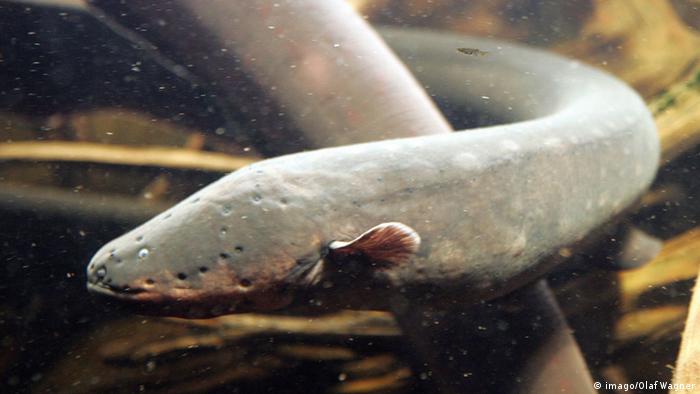electric eels
Science
Electric eels deliver taser-like shocks
In a painful experiment, a US researcher found out just
how strong the jolts delivered by the fish are. He had previously found
that electric eels have a special technique that makes their shocks
extra-efficient.
Now that's dedication to science: researcher Kenneth Catania tested
how strong the jolts are that electic eels use to shock their victims –
on himself. Catania, a biology professor at Vanderbilt University in
Nashville, in the US state of Tennessee, wanted to understand the
dynamics of the circuit created in an electric eel attack. For this, he
developed an apparatus that can measure the strength of the electric
current through a human arm that gets touched by an electric eel. The
experience, Catania wrote in the journal Current Biology, is quite
painful."It's impressive that a little eel could deliver that much electricity," Catania said. "We don't know the main drive of the behavior, but they need to deter predators, and I can tell you it's really good at that. I can't imagine an animal that had received this [jolt] sticking around."
Despite their name, electric eels are not in fact eels, but rather belong to the South American knifefish. Almost their entire bodies are covered with electricity-generating organs, so-called electroplaques.
Battle between electric eels and horses
In a previous experiment, Catania, who has been researching electric eels for years, found that the fish leapt out of the water and were thus able to deliver electricity directly from their chins to the victim. Their jolts are more effective this way because no electrical discharge dissipates through the water.
This behavior had been described by Alexander von Humboldt all the way back in the 1800s. The explorer described a dramatic battle between electric eels and horses in the Amazon.
But, Catania said, "No one really… believed it, or if they did, they thought it was just kind of weird."
The electric eel is not the only high-voltage animal. The platypus catches its prey in murky water with its eyes closed by honing in on the electrical impulses emitted by their prey. Their bills are covered in almost 40,000 electricity sensors.
Electric rays can produce up to 220 volts. Some of them, like the Pacific electric ray, use this electricity to stun their prey.
The Oriental hornet is a solar-powered insect: its brown stripes trap the sunlight and its yellow stripes convert it into electricity. Researchers aren't sure what the hornet uses this electricity for, but believe that it could help the animals create enzymes that aid in their metabolism.
COPIED FROM;dw.com


Comments
Post a Comment